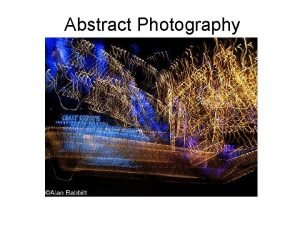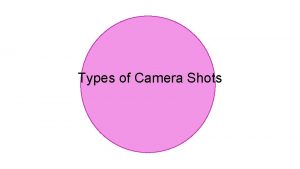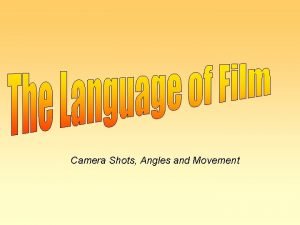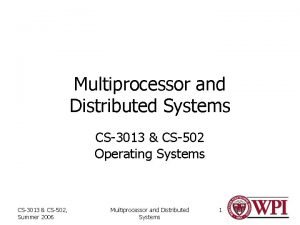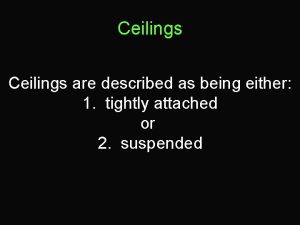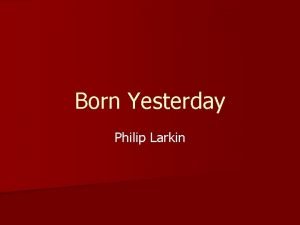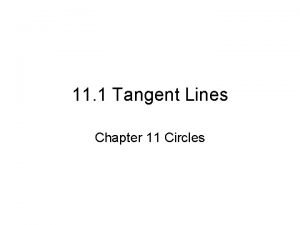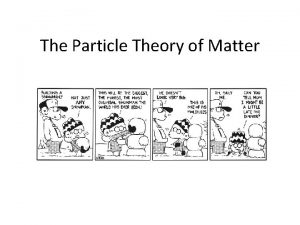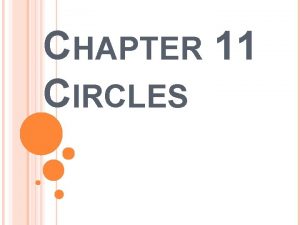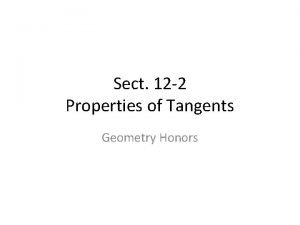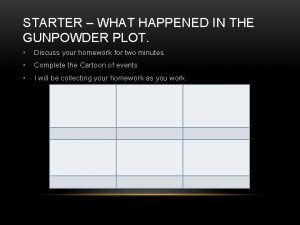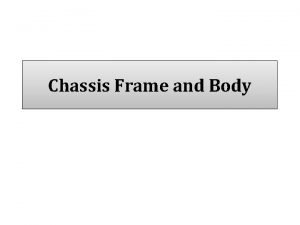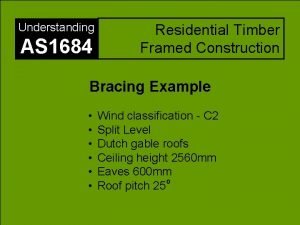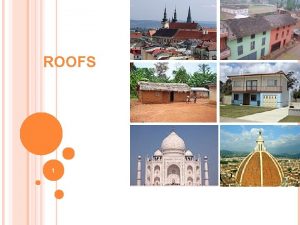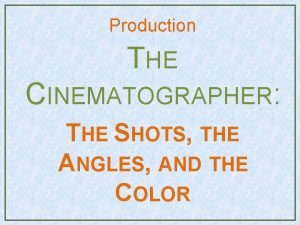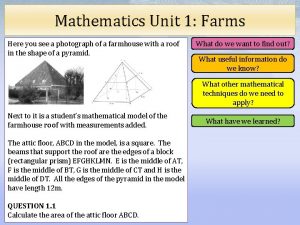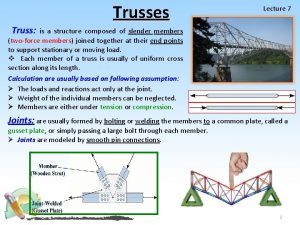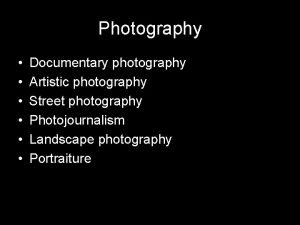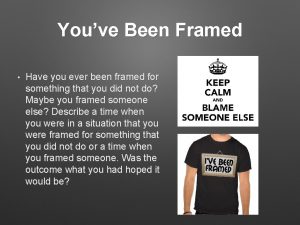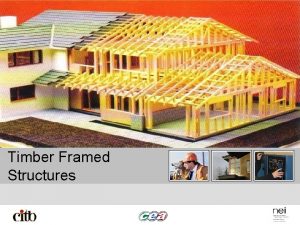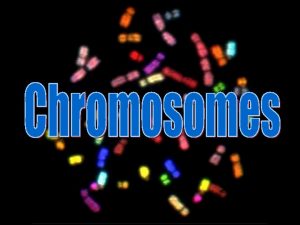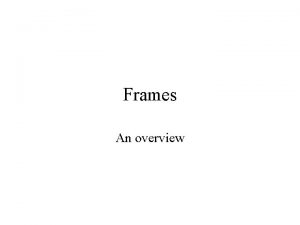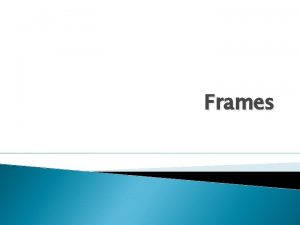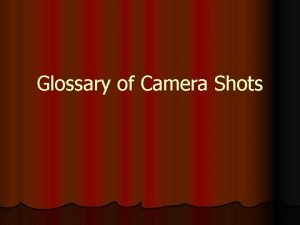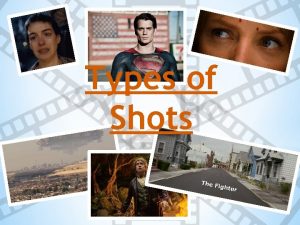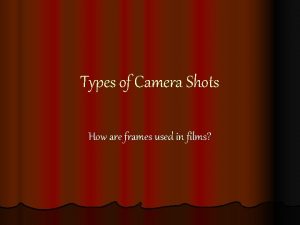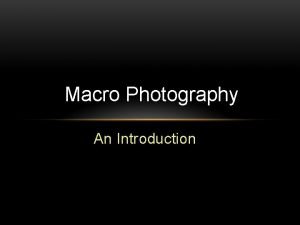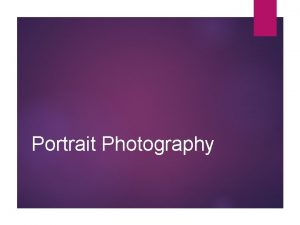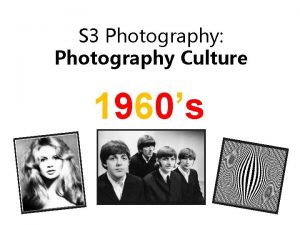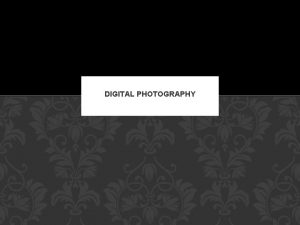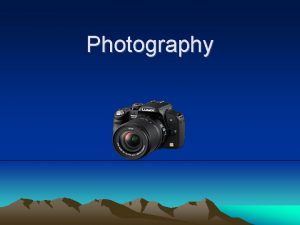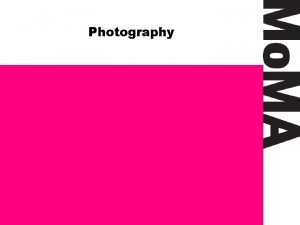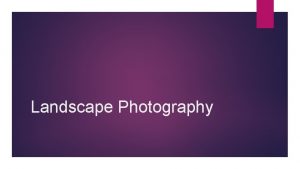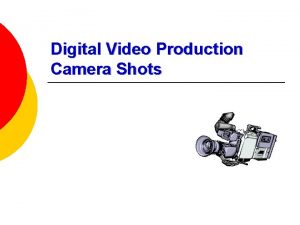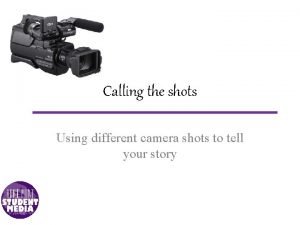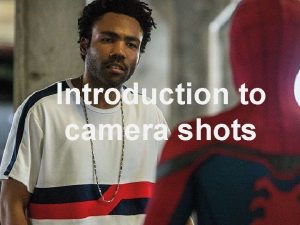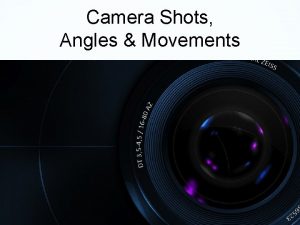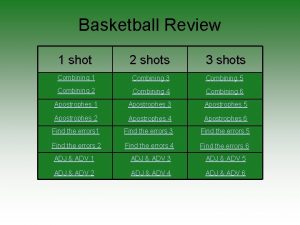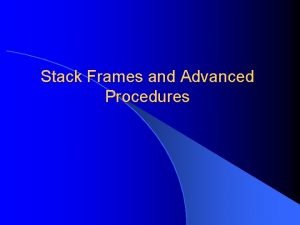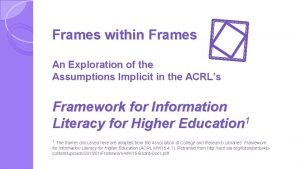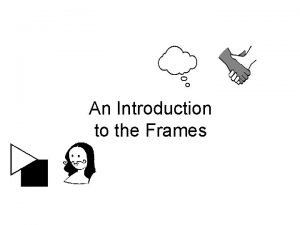PHOTOGRAPHY FRAMES Types of Shots TIGHTLY FRAMED SHOTS

























- Slides: 25

PHOTOGRAPHY FRAMES

Types of Shots

TIGHTLY FRAMED SHOTS Confined Intimacy


LOOSLY FRAMED SHOTS • Freedom • Loneliness • vulnerability


Wide Shot (WS) aka Long Shot -shows a scene from a distance (including characters) -Stresses the environment or setting of a scene

Medium shot (MS) - frames actor(s), normally from the waist up. -focus attention on one or two actors (parts necessary to demonstrate actions or circumstances)

Close-up (CU) -close range, inches away from actor's face, a prop, or object. -focus on facial expression -give significance to subject -direct audience to an important element of film.

Extreme Close Up (ECU) -appeals to one of the audiences five senses -achieves an emotional and personal response.

Shot Perspectives

EYE LEVEL SHOTS – -Audiences sees the event as if in the scene. -Clearest view of an object. -Treating characters as equals – achieves empathy.

BIRDS EYE VIEW -From directly overhead -Idea of fate.

HIGH ANGLED SHOTS -Camera is tilted downward. - Person seems harmless and insignificant -being controlled from outside source, fate

LOW ANGLED SHOTS -Camera titled upward -inspires awe -Environment usually minimized; sky or ceiling is background -Heightens the importance of a subject

OBLIQUE ANGLE – -Lateral tilt of the camera. -Suggests tensions, transitions, impending movement Image that slants to the right – Acting forceful Image that slants to the left – Weak, static

Character Perspective Shots

FULL FRONTAL -Most intimate, vulnerabilities exposed -Relationship between actor and audience


QUARTER TURN – high degree of intimacy but with less emotional involvement

PROFILE – More remote -Character lost in their own thoughts.

THREE QUARTER TURN – More anonymous. Rejecting audiences

BACK TO CAMERA -Characters alienation from the world. -Sense of concealment, mystery.

What to consider when creating your own storyboard…. .

– How much, and what, should be included in this shot? – What is the message and significance of this shot? – Where should the camera position be angled?
 Is abstract photography same as conceptual photography
Is abstract photography same as conceptual photography Type of shots
Type of shots 6 basic camera shots
6 basic camera shots Types of shots
Types of shots Tightly coupled multiprocessor
Tightly coupled multiprocessor All resources are tightly coupled in computing paradigm of
All resources are tightly coupled in computing paradigm of Tightly attached ceiling
Tightly attached ceiling Larkin born yesterday
Larkin born yesterday Circles chapter 11
Circles chapter 11 Tightly packed in a disorderly manner
Tightly packed in a disorderly manner Interstitial ceilings
Interstitial ceilings Unit 10 homework 6 tangent lines
Unit 10 homework 6 tangent lines Male reproductive system
Male reproductive system Tightly coiled dna
Tightly coiled dna Distributed system models in cloud computing
Distributed system models in cloud computing A belt fits tightly around two pulleys
A belt fits tightly around two pulleys Were the gunpowder plotters framed
Were the gunpowder plotters framed Combination system of framing
Combination system of framing Classification of chassis
Classification of chassis As1684 bracing
As1684 bracing What is triple roof
What is triple roof Concrete parapet cap
Concrete parapet cap Web frames ship
Web frames ship Loosely framed shot
Loosely framed shot The attic floor abcd in the model is a square
The attic floor abcd in the model is a square Is a framed structure composed of members
Is a framed structure composed of members
